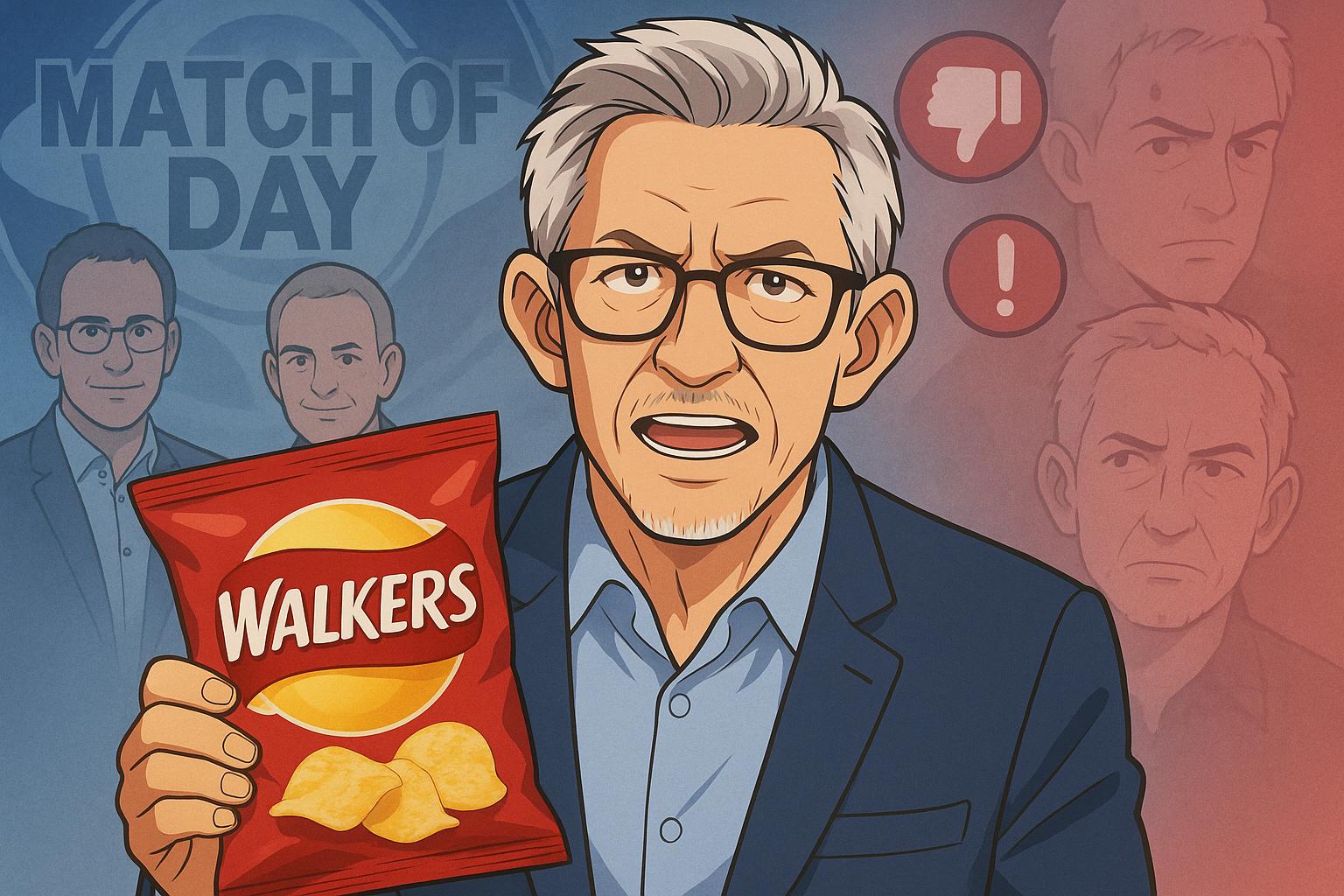Paul Burke has returned to reflect on a controversial legacy—his role in amplifying Gary Lineker’s public persona as a prominent figure in both sports and advertising. With Lineker's exit from the BBC following a lengthy and storied career, Burke suggests it is time for the advertising industry to reckon with its part in creating the celebrity that has now faced significant backlash.
Lineker, once relegated to obscurity after his football career in Japan, saw a drastic transformation when Burke’s agency—BMP DDB—made him the face of Walkers Crisps. This campaign not only rejuvenated Lineker's image but also paved the way for his enduring role on television, including a 26-year stint hosting "Match of the Day." His expertise and charm made him a household name, yet this rise ultimately laid the groundwork for the controversies that would follow. Burke notes that Lineker’s natural charisma turned him into a "telly natural," but his subsequent blend of sports commentary with political opinions has led to a precarious situation for both him and the BBC.
Adding to this is the recent shift in "Match of the Day" representation. With Lineker’s departure confirmed after a series of contentious incidents, including a controversial tweet about the UK government’s asylum policies which evoked comparisons to 1930s Germany, the BBC announced that Kelly Cates, Mark Chapman, and Gabby Logan would take turns presenting the landmark show. This trio not only reflects an evolution in the show's format—shifting from a single lead presenter since its inception in 1964—but also indicates a desire to navigate away from the controversies that Lineker attracted during his tenure.
Despite his major role in sports, Lineker has not been immune to criticism. Following a post that drew accusations of antisemitism—a depiction of a rat used in an offensive social media context—Lineker apologised unreservedly, stating he had not intended to offend. This incident has contributed to an ongoing narrative where his views seem to overshadow his accomplishments, moving him from a respected sports figure to one scrutinised under a harsher societal lens.
Burke reflects on whether Lineker’s views were genuinely his or merely a means to align with prevailing political thought, pondering if his sharp intellect had momentarily eluded him. This contemplation invites broader considerations within the advertising industry and beyond—of how the public elevation of a personality like Lineker can lead to significant reputational harm when personal beliefs clash with public expectations.
This narrative on celebrity and consequence is further complicated by Walkers Crisps’ decision to halt their collaboration with Lineker, a move indicating a tightening of brand associations to reflect evolving public sentiment towards figures in advertising amidst concerns like childhood obesity. Despite concerns voiced in Parliament about celebrities endorsing junk food several years prior, Burke maintains that Lineker's brand associations were not anticipated to result in the current fallout. This notion raises questions about the responsibility advertising professionals owe to the figures they elevate.
As Burke contemplates the ripples of Lineker’s social media activities, one wonders how the broader advertising community should engage with the dichotomy of creating stars while managing perceived risks. The situation ultimately prompts a call for introspection, not just for Lineker, but for the advertising sector at large, as it navigates a landscape increasingly fraught with moral complexities. It seems probable that, having built such a formidable personal platform, Lineker is unfazed by the fallout from his actions; his cool, unflappable persona may allow him to weather the storm with relative ease.
Paul Burke's candid reflections encourage a deeper examination of the intricate dance between fame, endorsement, and the potential for personal missteps to overshadow a lifetime of professional achievement.
Reference Map:
- Paragraph 1 – [1], [4]
- Paragraph 2 – [1], [2], [3]
- Paragraph 3 – [4], [7]
- Paragraph 4 – [5]
- Paragraph 5 – [1], [6]
Source: Noah Wire Services
